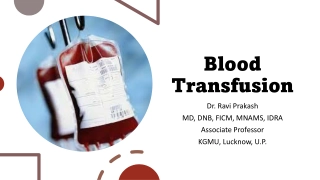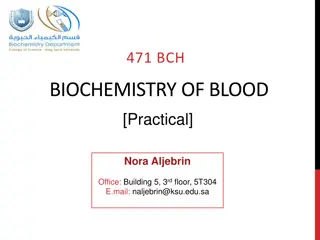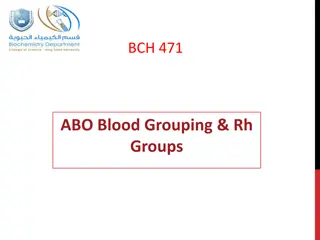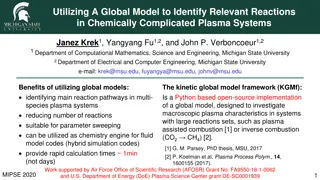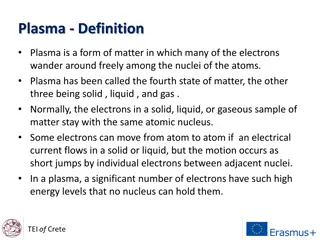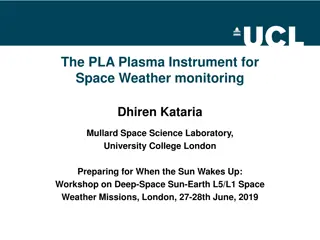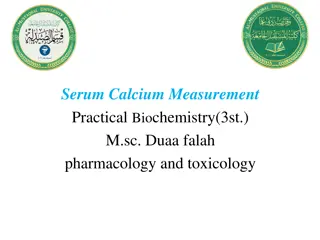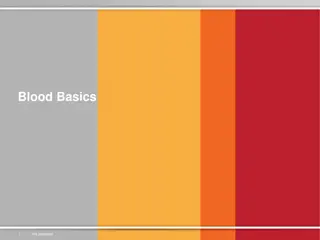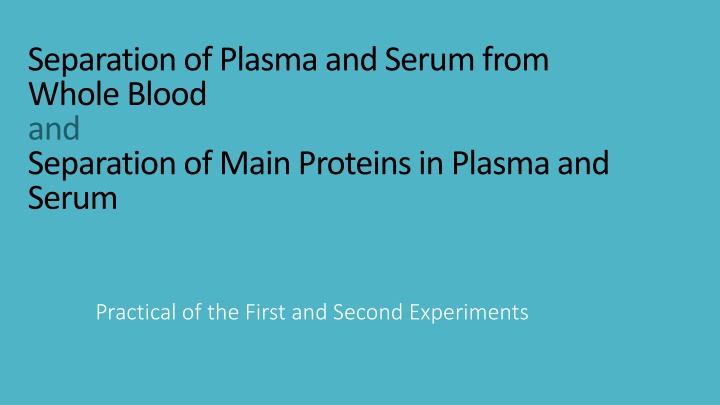
Blood Plasma and Serum Separation Techniques in Laboratory Experiments
Learn about the practical experiments involving the separation of plasma and serum from whole blood, as well as the detection and calculation of main proteins. Detailed steps, objectives, and results are provided for a comprehensive understanding.
Download Presentation

Please find below an Image/Link to download the presentation.
The content on the website is provided AS IS for your information and personal use only. It may not be sold, licensed, or shared on other websites without obtaining consent from the author. If you encounter any issues during the download, it is possible that the publisher has removed the file from their server.
You are allowed to download the files provided on this website for personal or commercial use, subject to the condition that they are used lawfully. All files are the property of their respective owners.
The content on the website is provided AS IS for your information and personal use only. It may not be sold, licensed, or shared on other websites without obtaining consent from the author.
E N D
Presentation Transcript
Separation of Plasma and Serum from Whole Blood and Separation of Main Proteins in Plasma and Serum Practical of the First and Second Experiments
Objectives Plasma Separation, and calculation of percentage Serum Separation, and calculation of percentage Plasma Proteins separation and detection
Separation of Plasma and Serum from Whole Blood 1-Plasma Separation http://search.stjames.ie/Labmed/media/Media,23953,en.jpg Centrifuge at 3000 rpm for 10 minutes Record the volume of the Whole Blood (V1) Record the volume of the Whole Blood (V1) Plasma Record the volume of the plasma (V2) Record the volume of the plasma (V2) Record the volume of the RBC (V3) and Record the volume of the RBC (V3) and Red Blood Cell C Calculate the percentage and compare it to normal alculate the percentage and compare it to normal
Results Results Component Component Total Volume Total Volume Percentage (%) Percentage (%) 1 Whole Blood V1= 2 Plasma V2= 3 RBCs V3=
Separation of Plasma and Serum from Whole Blood 2-Serum Separation http://cache2.asset-cache.net/gc/183952429-red-cap-tube-with-six-possible-uses-gettyimages.jpg?v=1c=IWSAssetk=2d=gyqTPSBSZOaadENTk7KTRvltkR8%2F41DgulY6dJ0wXLXR4yjGn6eFwmvMT6tZeyHf Centrifuge at 3000 rpm for 10 minutes Record the volume of the Whole Blood (V1) Record the volume of the Whole Blood (V1) Record the volume of the Serum (V2) Record the volume of the Serum (V2) Record the volume of the RBC (V3) and Record the volume of the RBC (V3) and C Calculate the percentage and compare it to alculate the percentage and compare it to normal normal
Results Results Component Component Total Volume Total Volume Percentage (%) Percentage (%) 1 Whole Blood V1= 2 Serum V2= 3 RBCs V3=
Separation of Main Proteins in Plasma and Serum There are many method for plasma proteins separation In this lab we will use salting out and then centrifugation Fibrinogen need a low concentration of salt to be separated Why? After that we will use different method for protein detection: Clotting test (to determine the presence of Fibrinogen) Clotting test (to determine the presence of Fibrinogen) Biuret Test (purple color) Biuret Test (purple color) Heat Coagulation Test Heat Coagulation Test
Method Method Serum Serum Plasma Plasma Separation of Globulin from Albumin Separation of Fibrinogen from other proteins Globulin Albumin Albumin+ Globulin Fibrinogen Heat Biuret test Biuret test coagulation Test Biuret test Biuret test Detect the presence of Fibrinogen Heat Salting out Coagulation Test Clotting Test Clotting Test

